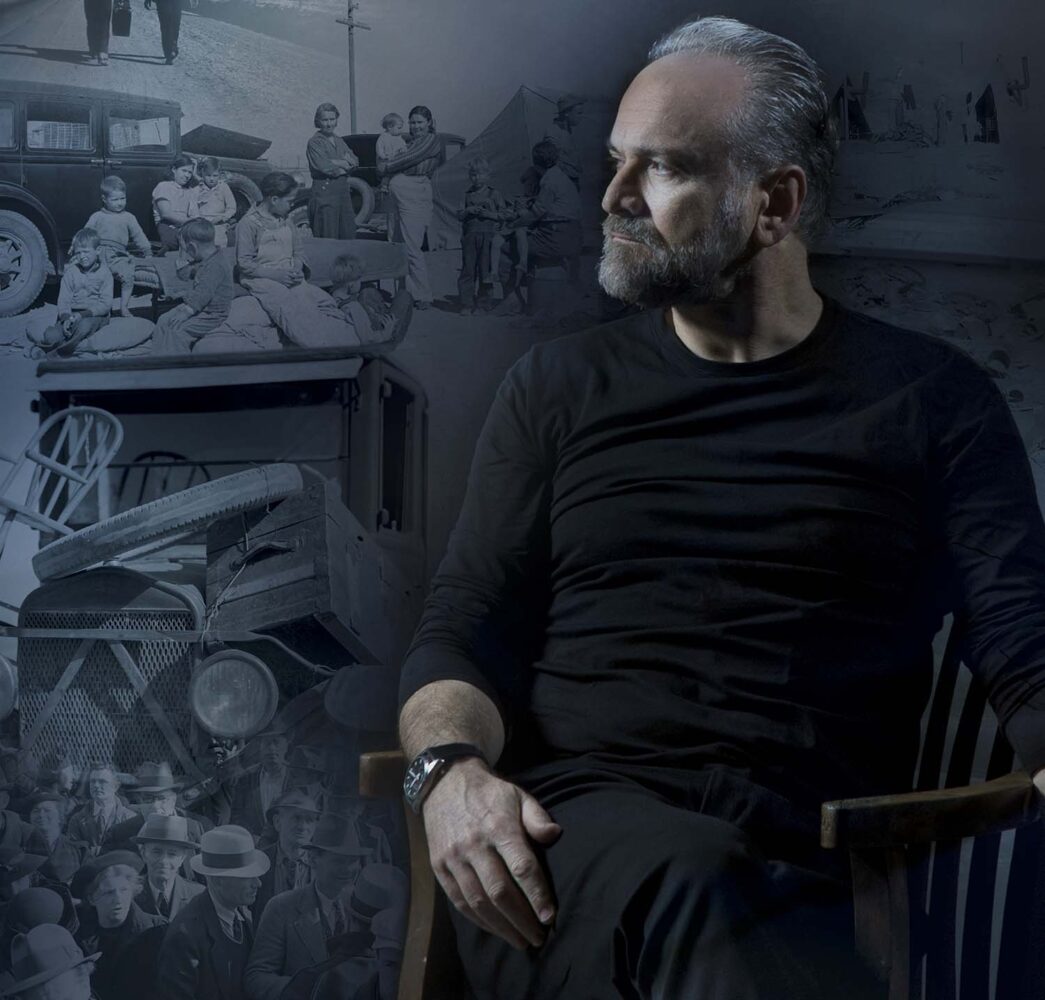He is an extraordinary figure of a narrator – both archaic and very modern at the same time – who can take shape in a work of dramaturgy based on John Steinbeck’s masterpiece. And thus perhaps there is no actor on the Italian Theatre Scene more capable than Massimo Popolizio to lend this powerful, unforgettable “story-teller” a body and voice suited to the literary greatness of the model.
Emanuele Trevi
In the summer of 1936, the San Francisco News asked John Steinbeck to investigate the living conditions of labourers being pushed to California from the central regions of the United States, mainly from Oklahoma and Arkansas, due to the terrible sandstorms and the consequent drought that had made those lands cultivated with cotton sterile. The result of that investigation was a series of articles from which the American author created three years later in 1939, the novel The Grapes of Wrath. What we are witnessing is the story of how John Steinbeck transformed that decisive journalistic, human and political experience into great literature.
